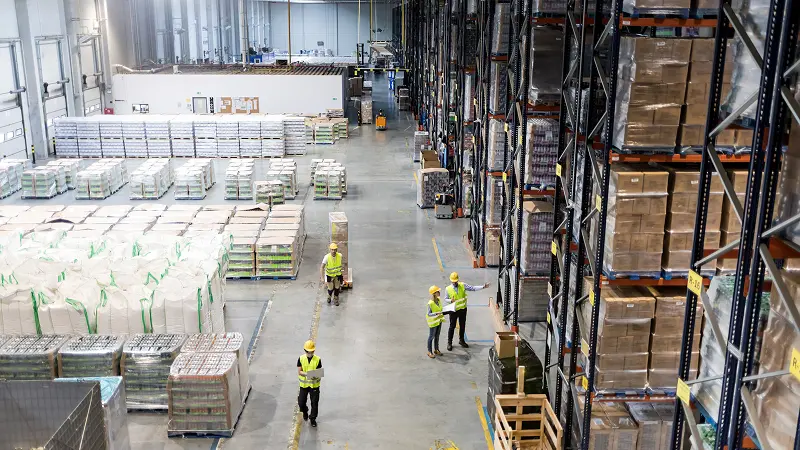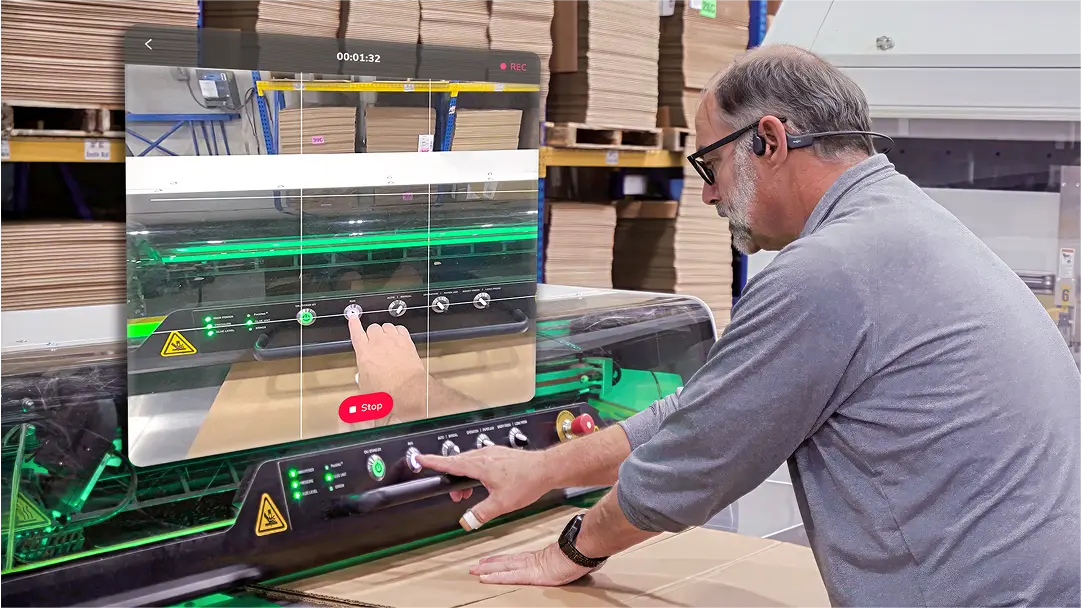Key takeaways
- AI is transforming frontline operations—accelerating the digitization of workflows to standardize execution and enhance consistency.
- The biggest gap isn’t training, it’s on-the-job assistance—AI turns expert know-how into consumable assistance that boosts performance from day one.
- The connected worker is here—AI-powered guidance, smart devices, and visual knowledge capture are making work smarter, faster, and more consistent.
Frontline transformation isn't coming tomorrow… It’s happening today.
If you’re in operations and not thinking about AI, you’re already behind. That was the resounding message during a recent MHI TechTalk, where leaders from Strivr and RNDC unpacked what AI-powered transformation really looks like on the frontline, not in some futuristic scenario, but today.
This wasn’t just a theoretical discussion. Derek Belch (CEO, Strivr), Justin Cellona (Product Lead, Strivr), and Robby Dhesi (Director of Operations Transformation, RNDC) shared how AI is being deployed right now to boost efficiency, standardize processes, and unlock real-time decision-making for frontline teams.
From clipboard to connected: The AI shift in operations
AI isn’t just another tech buzzword. It’s fundamentally reshaping how teams execute standard work. We’re talking about taking decades of tribal knowledge and turning it into digital playbooks that are accessible on the job. Anytime. Anywhere.
“We’re starting to see a lot of this come together… from worker to organization rather than top-down,” said Belch.
By digitizing workflows, teams are reducing day-one inefficiencies and minimizing the "ramp-up" time that traditionally drags down productivity. Robby Dhesi was candid about it: “We take a quality hit the first day, sometimes several days, when rolling out changes.” AI is closing that gap.
Turning experts into systems: AI as the great knowledge translator
Most businesses don’t have a training problem. They have a knowledge capture problem. Veteran employees carry years of insight in their heads. The challenge is making that knowledge scalable.
With tools like Strivr’s WorkWise, companies are putting AI to work to accelerate the transformation of subject matter expertise into standardized, repeatable systems. Think how-to videos, task flows, and real-time feedback, all integrated into the frontline’s daily routine.
As Derek Belch put it, “Let’s capture the hearts and minds of subject matter experts, and truly make their knowledge standard across the organization, not just how we teach people before they do a job, but how they learn and correct in the moment of need.”
This “power of perspective” goes beyond process efficiency. It’s about capturing reality through the worker’s own eyes. When associates see actual work through each other’s perspectives, as RNDC’s Robby Dhesi explained, “the translation gap disappears. Everyone learns faster, performs with confidence, and delivers consistent results.”
That concept connects directly to the cognitive science behind first-person (1P) procedure capture, which research shows dramatically improves procedural comprehension and accuracy. As explored in this blog authored by Strivr’s Director of Data Science, Joe Willage, that looks at 1P vs 3P capture, seeing work through a peer’s own lens activates embodied learning. The brain encodes the task as if it were performing it, boosting retention and execution precision.
This isn’t just better training. It’s a systemized way to raise the floor of performance across teams, especially when every facility, shift, and operator is different.
The future is the connected worker
Smart glasses. Voice-activated support. Real-time prompts. The connected worker is becoming more than a concept. It’s the future of operations.
The MHI Tech Talk panel painted a clear vision: frontline workers guided step-by-step by digital workflows, solving problems faster, and learning on the fly.
This is not about replacing humans. It’s about equipping them to work smarter, not harder. But getting there means change management. As Dhesi emphasized, trust, transparency, and team involvement are critical.
Bottom line: AI is the multiplier you’ve been waiting for
AI isn’t just a cool demo tool. It’s delivering real value on the frontlines, today. From accelerating onboarding to cutting inefficiencies and building smarter workflows, the organizations embracing AI now will be the ones leading tomorrow.
The message is clear. The tools are here. The use cases are real. The only question left is how fast can you implement?
Want to hear the full conversation from Derek Belch, Justin Cellona, and Robby Dhesi? Watch the full TechTalk here.









-min.jpg)



